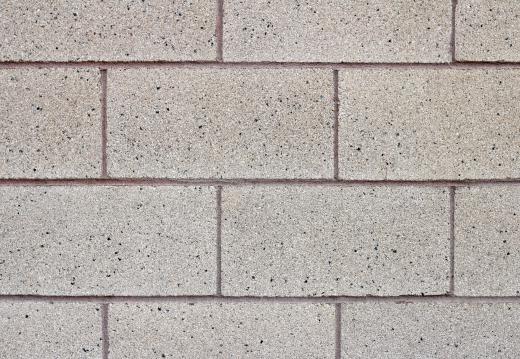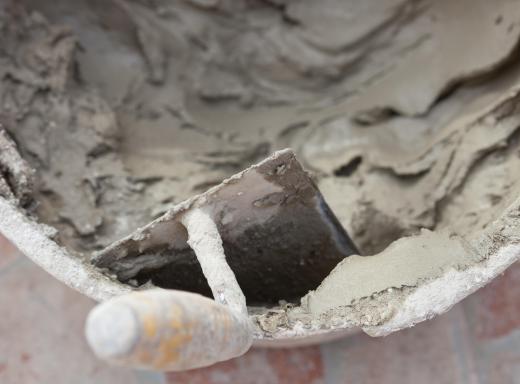Masonry mortar is a construction material that is used as a binding agent in masonry work. It is used to join bricks, concrete blocks, or stones and to keep them set firmly in place over time. Masonry mortar starts as a thick paste, then dries or cures over time to form a dense material that is nearly as hard and strong as the stone itself.
There are three basic formulas for creating masonry mortar. The most widely used is a Portland cement blend, which includes Portland cement, water, and sand. Newer versions use polymers such as latex or resin to supplement the natural binding agents in the cement. Known as polymer cement mortar, this material is more durable and damage-resistant than traditional Portland cement mixtures. Finally, some installers still rely on classic lime-based mortar made from limestone, brick dust, and water.

During construction, masonry mortar is troweled onto the top and sides of each stone. Excess material is removed before it can set and stain the finish of the material. Additional mortar may be added to even out the look of the structure, then tools are used to create smooth or rounded joint lines within the mortar before it dries.
Masonry mortar is also used to repair or restore existing structures. Old mortar is chiseled out and replaced with fresh material in a process known as "tuck-pointing" or "pointing-up." In buildings that were originally constructed using lime mortar, it is important to stick with lime-based blends to avoid moisture problems in areas where old and new mortar mixes interact.

The American Society for Testing and Materials (ASTM) is an international organization that produces the most widely used standards for building products, including mortar. ASTM C270 "Standard Specification for Mortar for Unit Masonry" is used throughout much of the world to standardize and categorize different types of mortar. According to this publication, masonry mortar can be broken down into four categories, each of which is randomly named using a different letter found in the word "mason." Each type is distinguished by its strength and durability, which is based both on the ingredients and level of moisture contained in each blend.

Type N is the most commonly used variety, and is designed for all normal above-ground applications. It is the most affordable of all four types, and has an average level of strength and hardness. Type S is used in below-grade applications like foundations and basements, while Type M is designed for extremely heavy loads. Type O mortar is mainly used for pointing existing walls, though it may also be used in applications subject to very cold temperatures due to its low moisture content.
